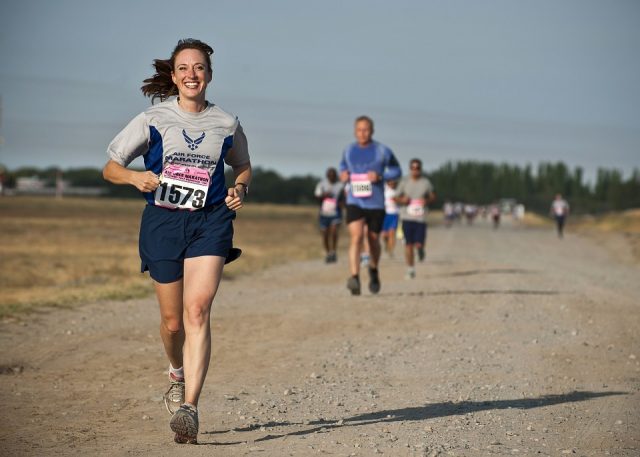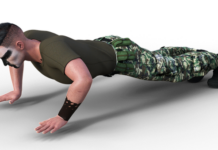Running, or popularly known as going for a run, is one of the most popular sports among the population. It consists of running a certain distance at the pace you want. It is widely practiced because it does not cost money, it can be done at any time of the day, and it can be carried out individually or accompanied. This requires cardiovascular endurance and optimal fitness.

What is running endurance?
Running resistance is necessary as it will determine the time and pace that we can impose during our practice. Going for a run can have several objectives. Some seek to burn fat to get a good figure, others play sports and improve their level of health, while others prepare races, such as running a half marathon.
When we run, our heart rate increases. The more trained you are, the more you can hold a given pace. The challenges are to increase this resistance little by little and, above all, constantly. One day you may think that running a certain distance may be impossible, while after a while, that distance will seem like a piece of cake. That day you will have managed to improve your endurance when running.
However, do not be too ambitious when it comes to running. In the sport of running, the phenomenon of sudden death is well known. This means that a person dies unexpectedly due to heart failure. It is not usual. In fact, every year one in 50,000-100,000 athletes die from this cause. Despite everything, you have to use your head when you go running. We must never go beyond our limit and, above all, if we notice any symptoms of fatigue or discomfort, stop for a long time and never suddenly, hydrate and recover energy to prevent any type of pain.
Advantages of having a good resistance
Having good endurance for running has many advantages, not only for sports, but also for life in general. The most outstanding advantages of having an optimal cardiovascular resistance are the following:
- Running prevents cardiovascular diseases and all their related risk factors. Some diseases such as hypertension are less common among those who have good physical resistance. Running also provides a greater number of immune cells, reducing the risk of suffering from acute diseases.
- Increases muscle mass despite not performing gym exercises. In addition to losing weight, there are studies that confirm that running activates muscle metabolism and tones all the muscles of the body in a few days.
- The athlete’s respiratory capacity is improved. Running allows us to breathe better. The volume of the diaphragm is increased, allowing you to breathe more deeply and draw in more oxygen. In addition, the body creates more red blood cells, which are needed to take oxygen from the lungs.
- The resistance of the heart is also increased. It should not be forgotten that the heart, in addition to giving life to any human being, is a muscle. Like any muscular organ, it increases in volume by playing sports and giving it a correct recovery phase. Therefore, improving endurance when running is to improve the level of heart rate both at rest and while doing sports.
Tricks to improve endurance when running
Improving running endurance should be the primary goal for any athlete preparing for a distance run, a half marathon, a marathon, or even any type of triathlon event. As with fitness, such as chest training, variety is the key to success. The same type of training should not be maintained for a long time since we run the risk of falling into stagnation. For this reason, the variety in race training will allow us to work on different types of resistance such as aerobic, anaerobic, as well as getting the body used to working at high heart rate in high fatigue conditions.
Triathlon events can be beneficial, even for athletes who just want to run. Swimming and cycling will allow us to give the final push to improve our resistance. In just two weeks we will begin to notice the first signs of improvement, which will increase our motivation. In a month we will be able to run 10 kilometers in a row with hardly any fatigue, and in less than half a year we will have sufficient conditions to prepare for any type of race. However, it’s not all about going for a run regularly. Correct improvement requires good planning on the part of the athlete or his coach if he wants to improve running endurance.
The first step is to choose how many days of the week will be devoted to athletics. Three to start will be enough, which can be increased to four or five depending on the objectives of each one. You just have to respect several rules. The first, leave a day of rest between workouts, and a minimum of two for those days that is more intense. Subsequently, set a distance that our body can assume based on our cardiovascular resistance. If you start completely from scratch, about 6-10 kilometers will be enough, and if there is some base you can reach 15-20 kilometers a week. From then on, and depending on our results, we will increase the mileage between 5 and 10% each week.
Examples of training to improve our rhythm:
With these inputs, a week of training to improve our running endurance could be as follows:
- Monday: 5 kilometers at an easy pace. You should not end up too tired as there is a whole week ahead of you.
- Tuesday: rest
- Wednesday: Run at jogging pace to warm up, then 5 sets of 300m at high pace from here.
- Thursday: Rest
- Friday: 3.5 kilometers of continuous running in which fatigue should be noted at the end of training, but not extreme.
- Saturday: Rest
- Sunday: Rest
From here on, each week we must print a little more hardness to our training. On Monday, instead of running 5 kilometers, we will go to running 8, while on Wednesday we will increase the five series to 400 meters each. Finally, on Friday we will go from 3.5 to 6 kilometers. If desired, a fourth training day can even be entered, which could be Sunday. Always look for something different. In this case, a continuous run of 5 kilometers with changes of rhythm every three minutes to start working on the changes of rhythm in our body, and to continue improving our body’s capacity for fatigue. Another variable that can be introduced into training is playing with the terrain where we do our training... It should not always be flat, but introducing some slope will also help improve the physical shape of our body and, therefore, the resistance when running.
However, if regularity is maintained and a correct diet is applied, the results will be noticeable in a short space of time, which can range from 10 days to four weeks. Obviously, each race requires its type of training, but in all cases, distances and intensities should always be varied to achieve the expected results and lower the marks in the shortest possible time.

















